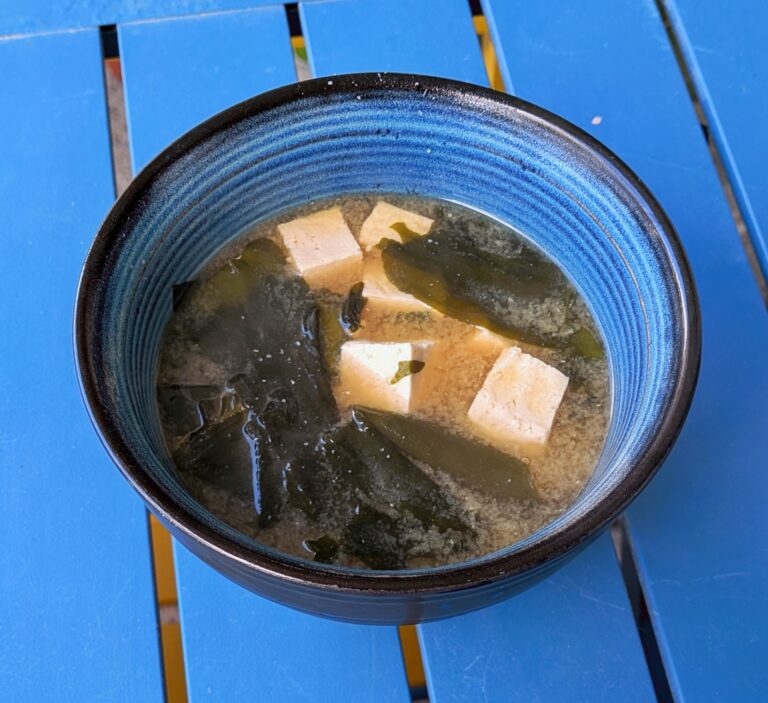Prep Time:
5 minutes
Cook Time:
10 minutes
Total Time:
15 minutes
Yield:
4 cups
Servings:
2 servings
Note:
These measurements are just for reference! Like many Asian home cooks, I often eyeball the ingredientsrather than following strict quantities. I taste as I go — adding a little more miso for flavor, a few extra tofu cubes for texture, or a handful of wakame if I want something heartier.
So don’t worry too much about precision — make it your own, trust your senses, and enjoy the process.
🌸 How I Fell in Love with Miso Soup (and How You Can Make It at Home
There’s something incredibly comforting about a warm bowl of miso soup — gentle, flavorful, and nourishing in every spoonful.
Growing up in Nepal, we didn’t really have much exposure to international food culture. Our meals were local and wholesome — filled with lentils, rice, vegetables, and spices. So when I moved to Europe, everything felt new and exciting.
Berlin was my very first international trip — both for travel and to move into a new country. It was a huge step, filled with discovery and change. During my almost two years there, I explored different cuisines for the first time, and that’s where I tasted authentic miso soup in Japanese restaurants. I even learned a few cooking tips from some lovely Japanese friends I met along the way.
But my real love story with miso soup began when my husband and I traveled to Japan. We spent three unforgettable weeks there — wandering through Kyoto’s peaceful temples, enjoying street food in Osaka, and having miso soup almost every single day.
If you’d like to read more about our experience, check out my Japan Travel Blog here — it’s full of our favorite food discoveries, small-town adventures, and cultural surprises from our trip.
Now, whenever I go back to Nepal, I’m amazed at how much has changed. In cities like Kathmandu, international cuisines have become a big part of the food scene — from sushi and ramen to miso soup itself. It’s wonderful to see that global exchange of flavors reaching home.
Since that trip, miso soup has become one of my favorite rituals — especially during autumn and winter. It’s light, soothing, and somehow feels like a warm hug in a bowl, much like my pumpkin and carrot velouté, which is another one of my favorite seasonal comfort soups.
🥢 The Original Japanese Miso Soup Recipe
Ingredients
4 cups dashi stock (or made using dashi powder, according to the package instructions)
3 tablespoons miso paste (white or red, depending on taste)
½ cup tofu, cubed
¼ cup green onions, chopped
1 tablespoon dried wakame seaweed (added directly to the soup)
Step by Step Instructions:
1. Prepare the dashi:
I used dashi powder directly in 4 cups of water, because that’s what I had on hand. Stir until dissolved and heat over medium heat. (Tip: You can also use prepared dashi stock instead.)
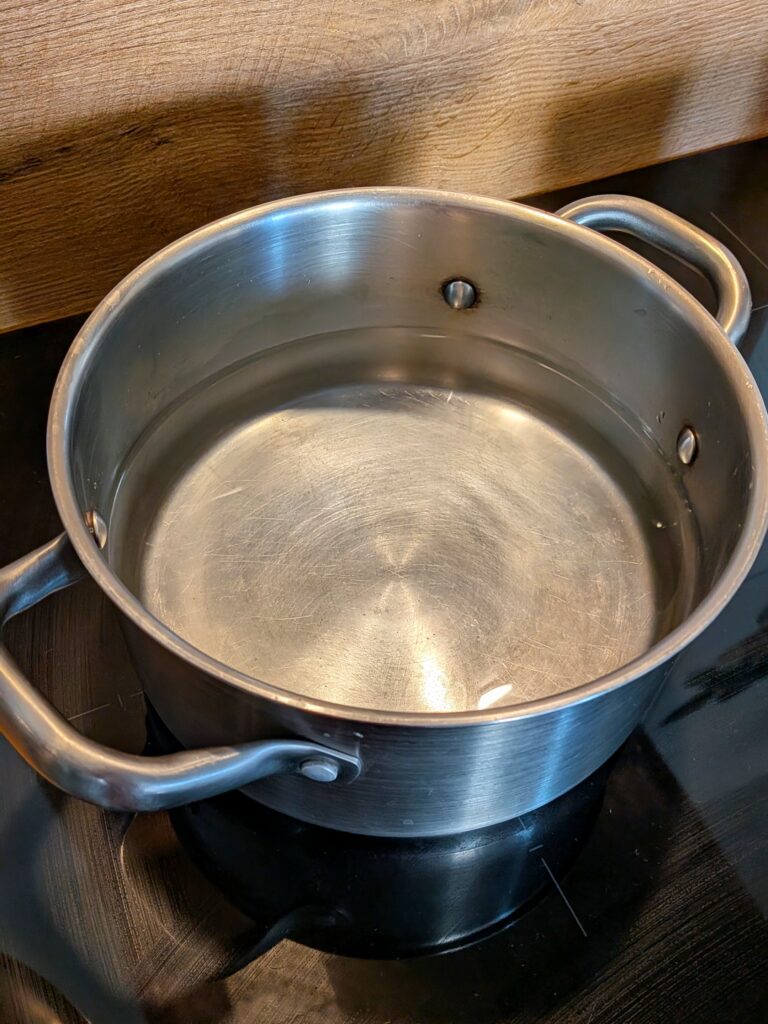
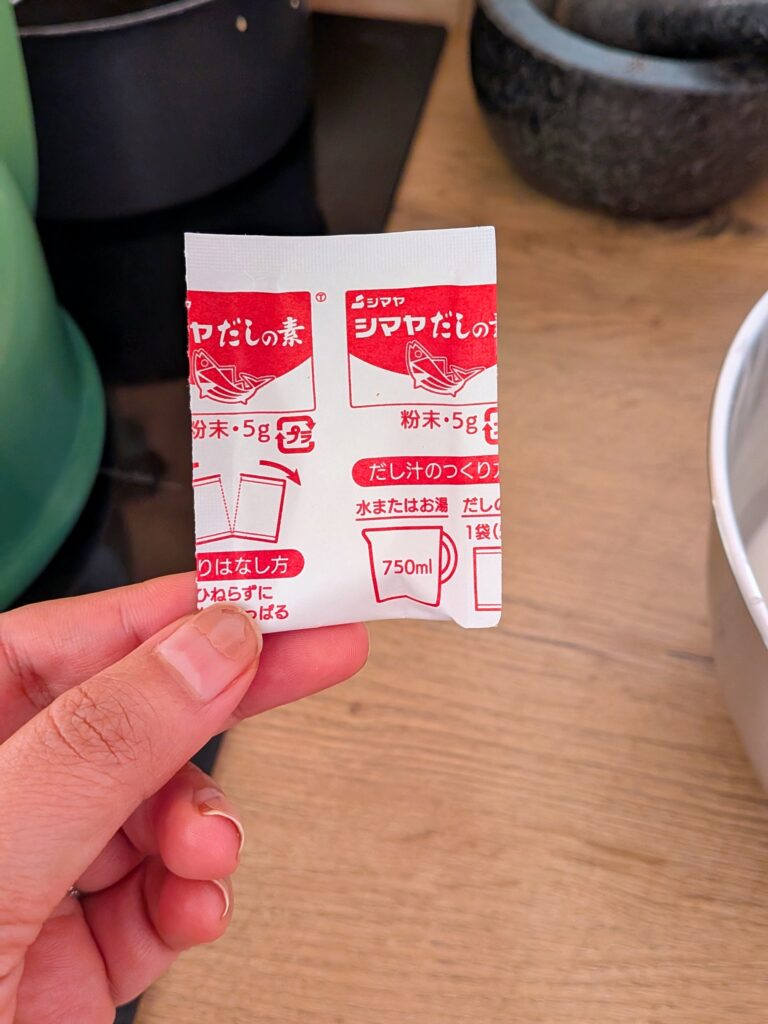
2. Prepare the miso paste:
I pass the miso paste through a sieve directly into the pot to avoid clumps. Any pieces that don’t pass through the sieve are removed.
Alternative method: If you’re not confident adding miso directly to the pot, dissolve it in a separate bowl with a little hot water first, then add it to the dashi mixture.
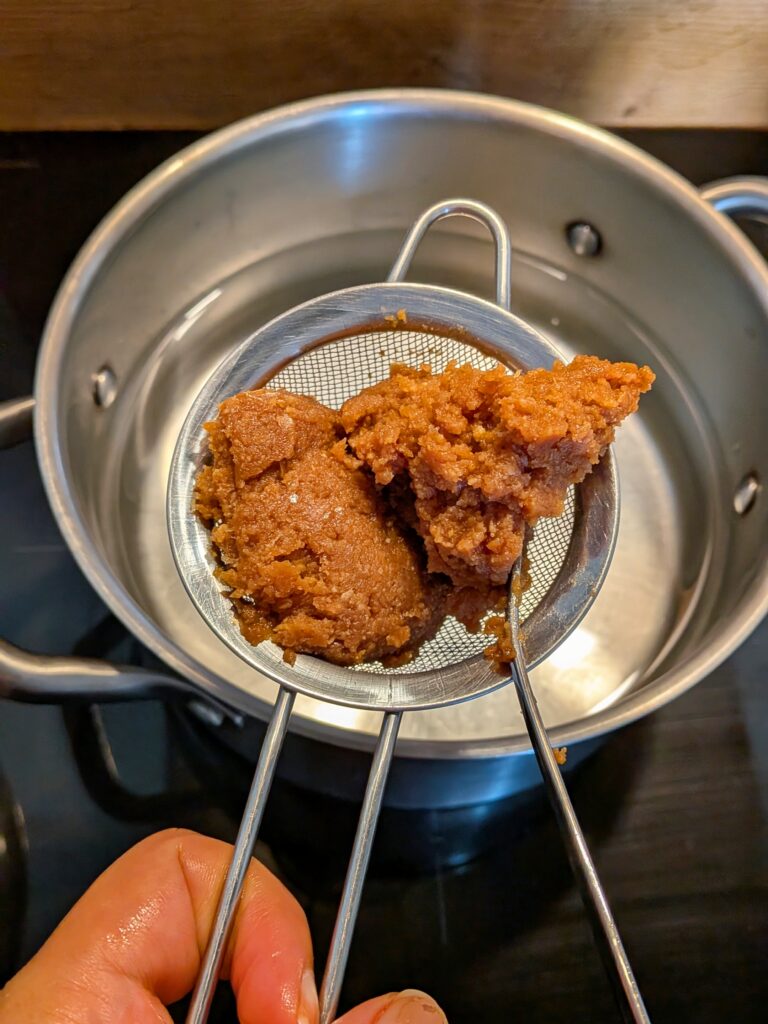
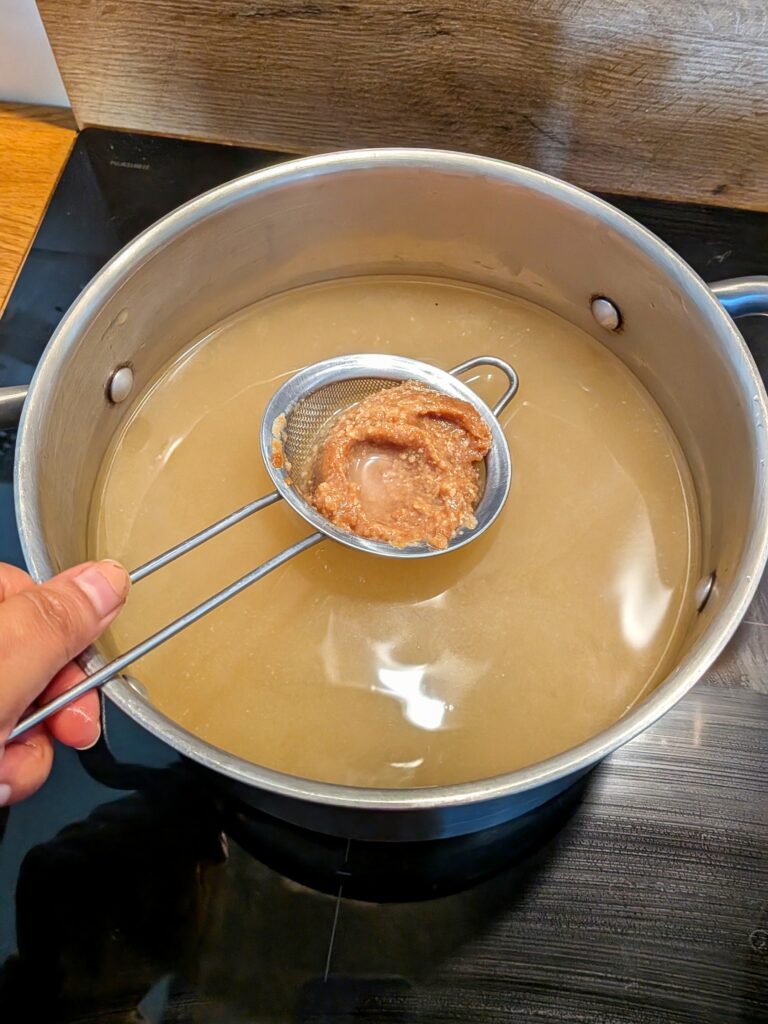
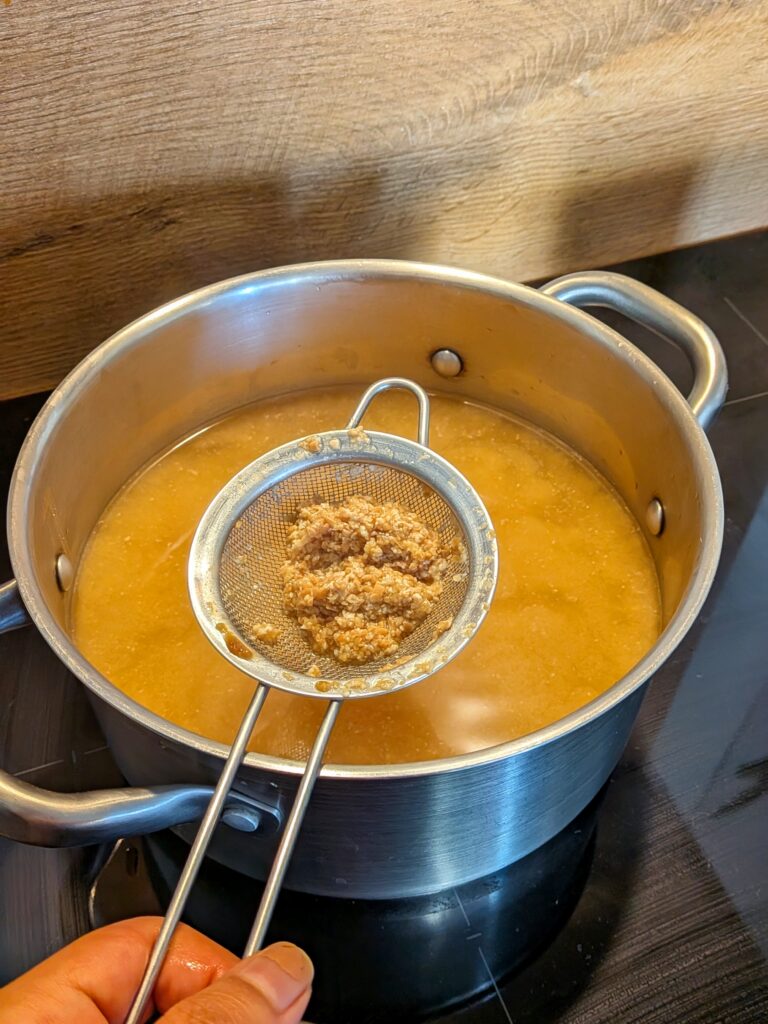
3. Add tofu and wakame:
Once the water is hot, add the tofu cubes and dried wakame directly into the pot. It will rehydrate naturally as the soup cooks.
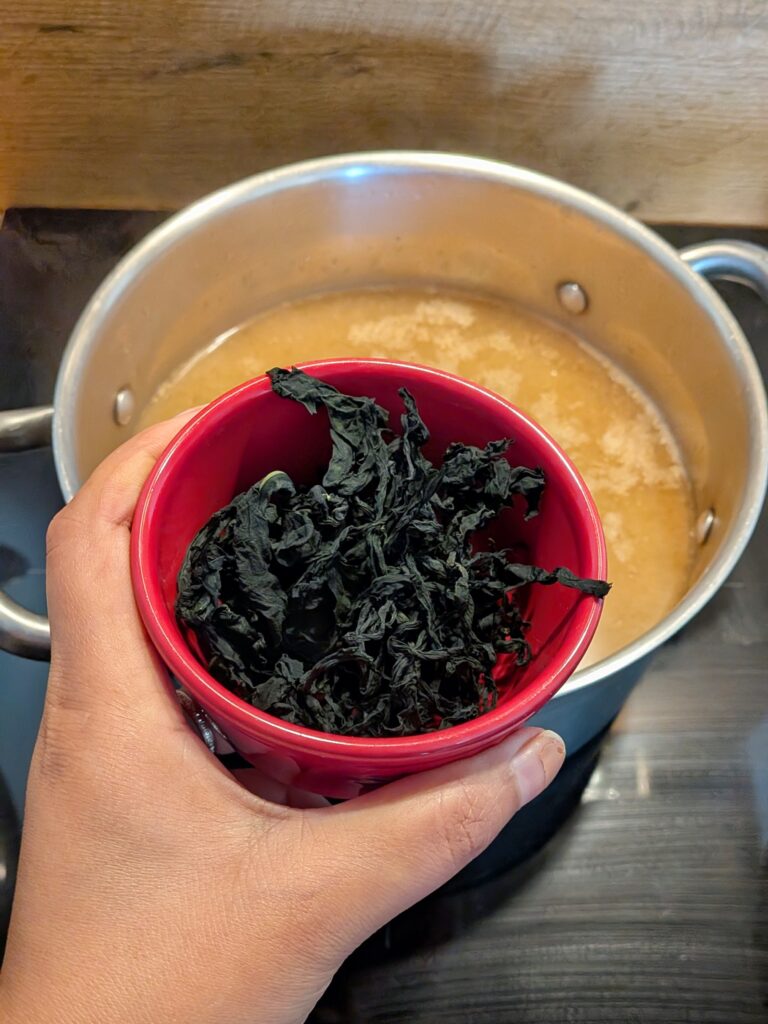
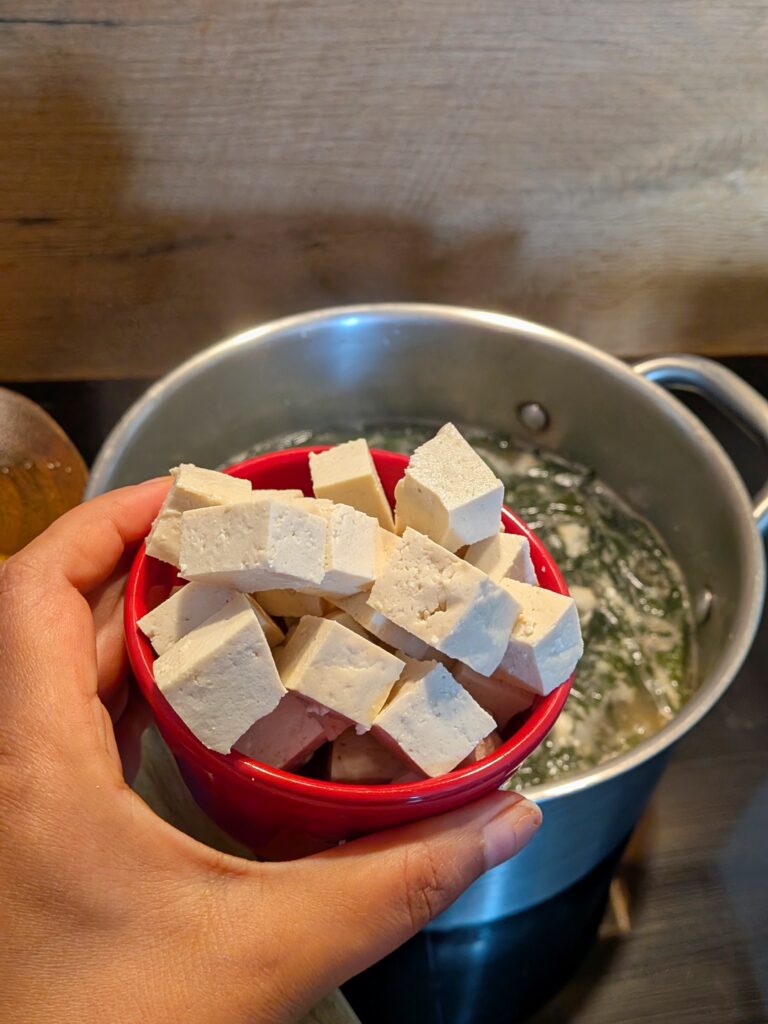
4. Do not boil:
Keep the soup below boiling point — this preserves the delicate flavor of the miso.
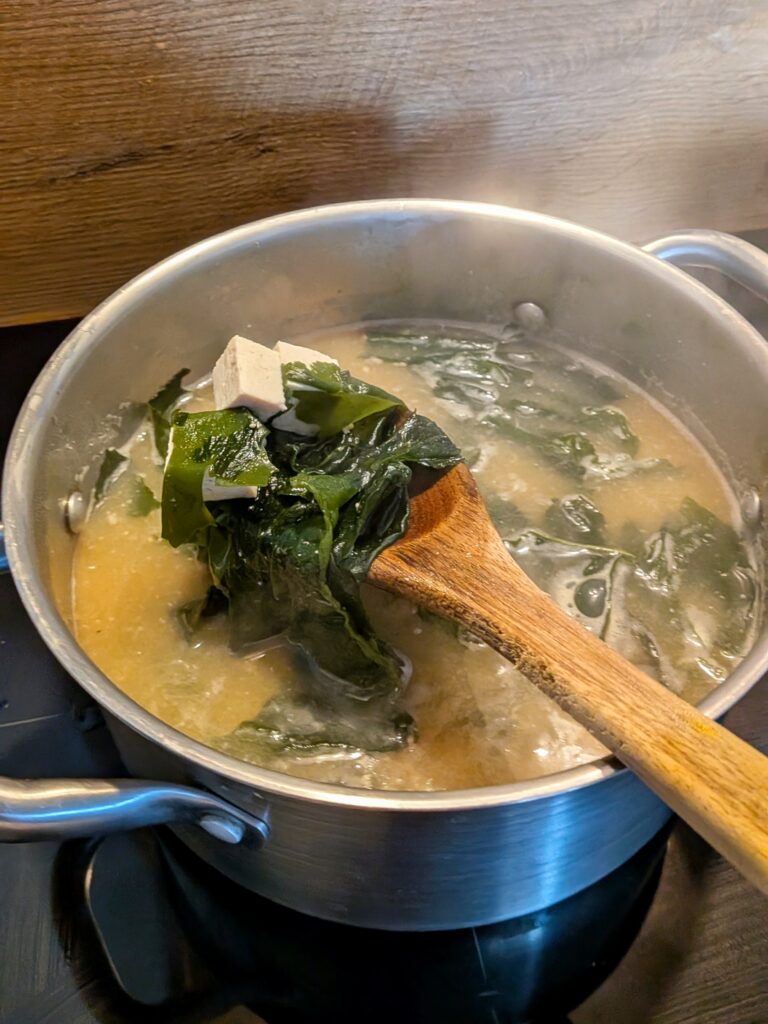
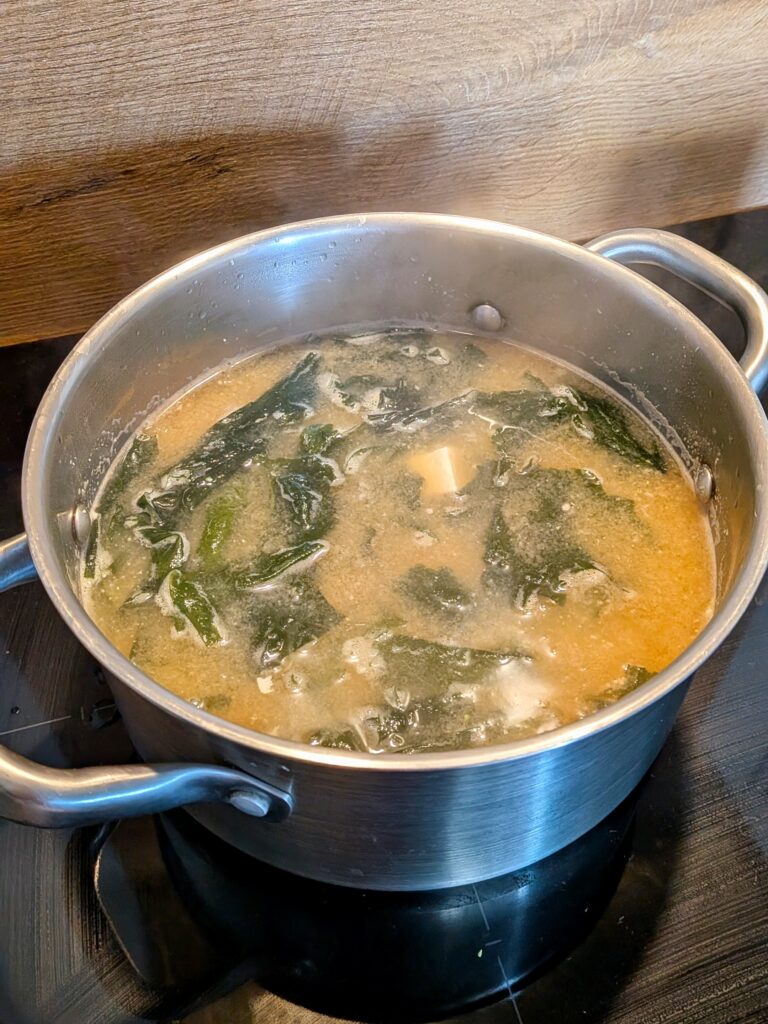
5. Garnish and serve:
Sprinkle chopped green onions before serving.
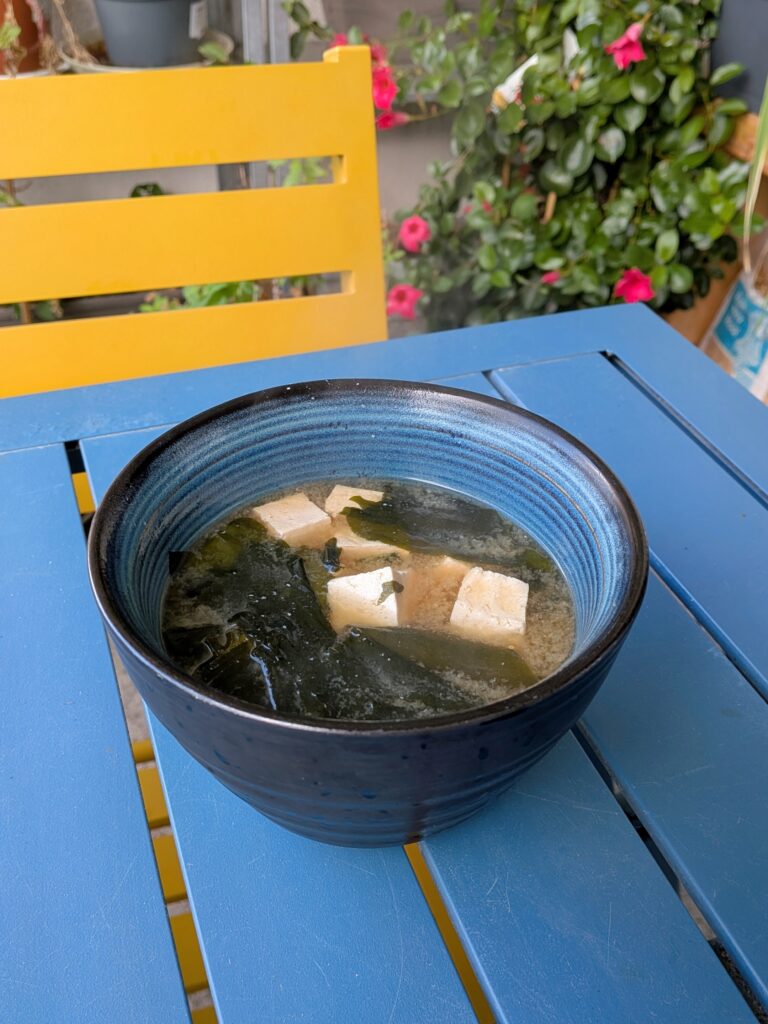
🌿 The Eyeballing Technique: Cooking Like an Asian
Let’s be honest — if you grew up in an Asian household (or have watched one cook!), you know that exact measurements are optional. Most of us rely on intuition, tasting, and adjusting as we go.
When I cook, I rarely measure tablespoons or cups. I simply eyeball the ingredients — adding a little more miso for depth, extra tofu for texture, or a handful of seaweed if I’m craving something heartier. It’s how I watched my family cook back home, and it’s still how I do it today.
So while the servings and yield above are helpful, I encourage you to make this soup your own — trust your taste buds and follow your senses.
🌶 My Personal Twist: A Touch of Home
Even though I love the authentic Japanese recipe, I can’t resist adding my own roots and flavors to it.
Sometimes I sprinkle in a bit of Timur chop — a Nepali blend of Sichuan pepper and red chili powder that adds a bold, citrusy heat. Other times, I mix in chili garlic sauce or add a few slices of red chili, because, well, I have a soft spot for spice.
It’s my way of blending two worlds — the calm, umami-rich flavors of Japan and the vibrant, fiery soul of Nepal.
🍵 Final Thoughts
Making miso soup at home has become one of my favorite ways to bring warmth and balance into my day. It’s quick, nourishing, and endlessly adaptable — perfect for chilly evenings or whenever you crave something comforting.
Whether you follow the traditional miso soup recipe or cook by feel like I do, this humble bowl will always bring comfort — one spoonful at a time.

